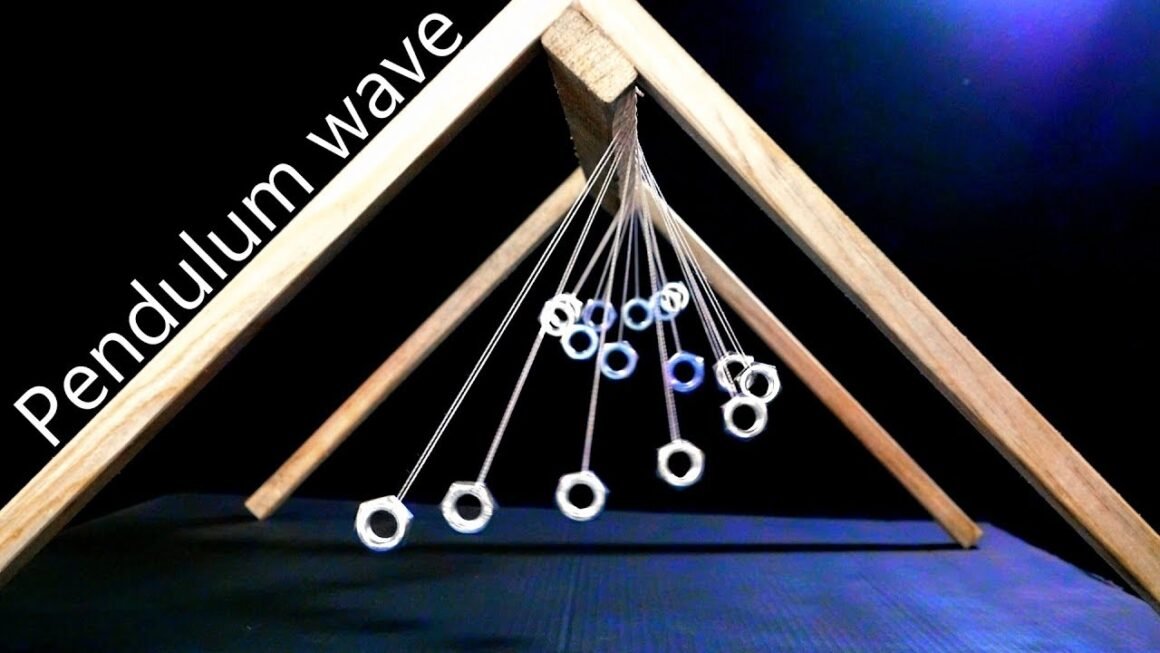Introduction
The phrase “Move Like a Pendulum NYT“ has been used in various contexts, from physics to literature and even in economic discussions. The idea of swinging, oscillating, and swaying represents a repetitive movement often seen in nature, mechanics, and human behavior.
What Does “Move Like a Pendulum” Mean?
The term describes a back-and-forth movement influenced by gravity and momentum. In physics, a pendulum oscillates due to an external force, creating a predictable rhythmic motion.
Beyond science, the phrase is used metaphorically to describe economic cycles, emotional fluctuations, and political shifts. This motion is evident in daily life, from swings in stock markets to waves in public opinion.
Scientific Perspective: Why Objects Swing Like a Pendulum?
1. The Physics Behind Oscillation
A pendulum swings due to the force of gravity and inertia. When displaced, it moves back and forth until air resistance or friction slows it down. This movement is seen in:
- Clocks: Traditional pendulum clocks rely on oscillating motion to keep time.
- Seismic waves: Earthquakes cause the ground to vibrate and oscillate like a pendulum.
- Suspended objects: A hanging light fixture swings when disturbed.
2. Undulating Motion in Nature
Natural elements also move like a pendulum in various ways:
- Waves in the ocean undulate as they travel through water.
- Tree branches sway in the wind.
- Animals, like snakes, oscillate their bodies when moving.
These examples show how pendulum-like motion is embedded in nature.
Metaphorical Use of Pendulum Motion in Society
1. Economic Fluctuations: Markets Waver Like a Pendulum
Stock markets teeter between growth and decline in cycles. Analysts describe economic patterns as a pendulum swing between inflation and deflation. Investors often oscillate between optimism and fear, driving market trends.
2. Political Shifts: Governments Sway Between Policies
Politics often follow a seesaw movement, shifting from one ideology to another. Elections fluctuate based on public sentiment, creating a cycle of alternating leadership. Political analysts use pendulum models to predict voting trends.
3. Emotional and Psychological Patterns
Human emotions also move like a pendulum, swinging between happiness and sadness. This motion is seen in:
- Mood swings in daily life.
- Decisions that waver between choices.
- Reactions that fluctuate based on experiences.
Psychologists study emotional oscillation to understand behavior.
Pendulum Motion in Technology and Engineering
1. Vibrations in Machines and Structures
Engineers account for oscillating forces when designing buildings, bridges, and vehicles. Examples include:
- Suspension bridges swaying during strong winds.
- Car suspensions absorbing road shocks.
- Machines vibrating due to mechanical imbalances.
2. Robotics and AI: Mimicking Natural Motion
Modern robotics incorporates pendulum-like motion for efficiency. Robots use swaying movements to maintain balance, similar to how humans walk. AI systems also adjust decisions based on fluctuating data, much like a pendulum adjusting its course.
Cultural and Artistic Representations of Pendulum Movement
1. Literature and Philosophy: The Pendulum as a Symbol
Writers often use pendulum imagery to depict the passage of time and inevitability of change. In literature, characters may oscillate between conflicting emotions or moral choices.
Philosophers like Hegel describe history as a dialectical swing, where opposing ideas alternate until a new balance is found. This concept influences political theories and cultural narratives.
2. Music and Dance: The Rhythm of Motion
Music follows a pendulum-like beat, with rhythms that rise and fall. In dance, movements often teeter between fast and slow tempos, mimicking oscillation patterns.
These artistic expressions showcase how humans internalize pendulum motion in creative ways.
Why Understanding Pendulum Motion Matters
1. Predicting Trends and Cycles
Recognizing oscillating patterns helps in forecasting trends in business, technology, and human behavior. Market analysts, psychologists, and scientists all use pendulum models to make predictions.
2. Engineering Stability in Structures
Understanding pendulum forces improves architectural designs, making buildings more resilient against natural forces. Engineers create vibration-resistant structures to ensure stability.
3. Enhancing Personal Decision-Making
Recognizing emotional swings can help individuals maintain balance in personal and professional life. Understanding the nature of oscillation allows for better emotional regulation and strategic decision-making.
Conclusion
The concept of “Move Like a Pendulum NYT” extends beyond physics into economics, politics, emotions, engineering, and culture. Whether it’s a market that wavers, a bridge that sways, or emotions that fluctuate, pendulum motion influences many aspects of life.
By understanding how things oscillate, vibrate, and undulate, we can anticipate patterns, improve designs, and make better choices. The pendulum’s movement is a fundamental force, shaping everything from science to human behavior.
FAQs
1. What does “Move Like a Pendulum NYT” mean?
It refers to back-and-forth motion seen in science, nature, economics, and human behavior.
2. How does a pendulum work in physics?
A pendulum oscillates due to gravity and inertia, creating a regular swinging motion.
3. Why do financial markets swing like a pendulum?
Markets fluctuate between growth and decline based on economic cycles and investor sentiment.
4. How is pendulum motion used in engineering?
Engineers design structures that can withstand oscillations, vibrations, and fluctuating forces.
5. What is the psychological significance of pendulum motion?
Human emotions and decisions oscillate between choices, much like a pendulum swinging between two points.
